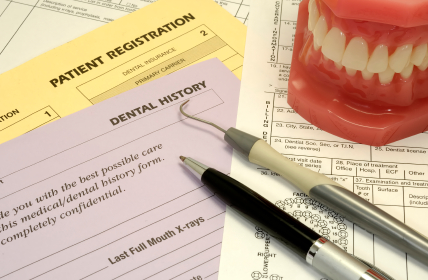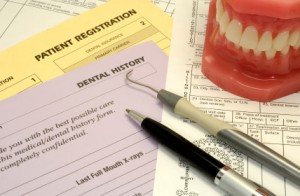She lived to be 100, without serious illness, and many asked what was the key to her longevity.
She had her teeth replaced with dentures mid-life long before the days of implants. She truly felt that the gateway of disease to the rest of her body had been eliminated.
Hardening of the arteries was just not an option. She believed by eliminating bad teeth and irritated gums that she saved her heart.
Maybe she was right!
Four types of bacteria are known to cause gum disease. A study recently examined one of these bacteria by infected it into mice. Once the bacteria had been carried into the heats and aortas of the mice, researchers measured levels of known heart risk factors – such as inflammation and increased levels of cholesterol.
“There are a lot of studies that suggest that oral health, and gum disease in particular, are related to serious conditions like heart disease,” said periodontist Sally Cram, DDS, a spokeswoman for the American Dental Association.
Moise Desvarieux, MD, PhD was the lead author in a study published in Circulation: Journal of the American Heart Association. This study indicated that individuals with higher blood levels of certain disease-causing bacteria in their mouth were more likely to have atherosclerosis in the carotid artery in the neck, which can lead to having a stroke.
Ultimately, those that were treated for periodontal disease actually showed improvement in their arterial plaque levels and inflammation markers.
The longer plaque and tartar are on teeth, the more damage it can cause. According to the National Institute of Dental and Craniofacial Research, the bacterium that causes inflammation of the gums that is called “gingivitis.”
In gingivitis, the gums become red, swollen and can bleed easily. Gingivitis is a mild form of gum disease that can usually be reversed with daily brushing and flossing, and regular cleaning by a dentist or dental hygienist. This form of gum disease does not include any loss of bone and tissue that hold teeth in place.
When gingivitis is not treated, it can advance to “periodontitis” (which means “inflammation around the tooth”). In periodontitis, gums pull away from the teeth and form spaces – called “pockets” – that become infected. The body’s immune system fights the bacteria as the plaque spreads and grows below the gum line. Bacterial toxins and the body’s natural response to infection start to break down the bone and connective tissue that hold teeth in place. If not treated, the bones, gums, and tissue that support the teeth are destroyed. The teeth may eventually become loose and have to be removed.
When it comes to buying dental insurance, you want to evaluate annual amounts that are paid out. Some plans may pay only $1,000, lets say annually. Depending on types of treatment needed, that type of policy may not be beneficial. You may want to shop for a dental policy where there is no cap but discounts per type of treatment. Some plans do not cover pre-existing conditions such as missing teeth.
If you don’t have insurance and need dental work, start with the billing specialist at your dentist to learn about the best options first. Sometimes payment plans may be the best approach for your situation.













